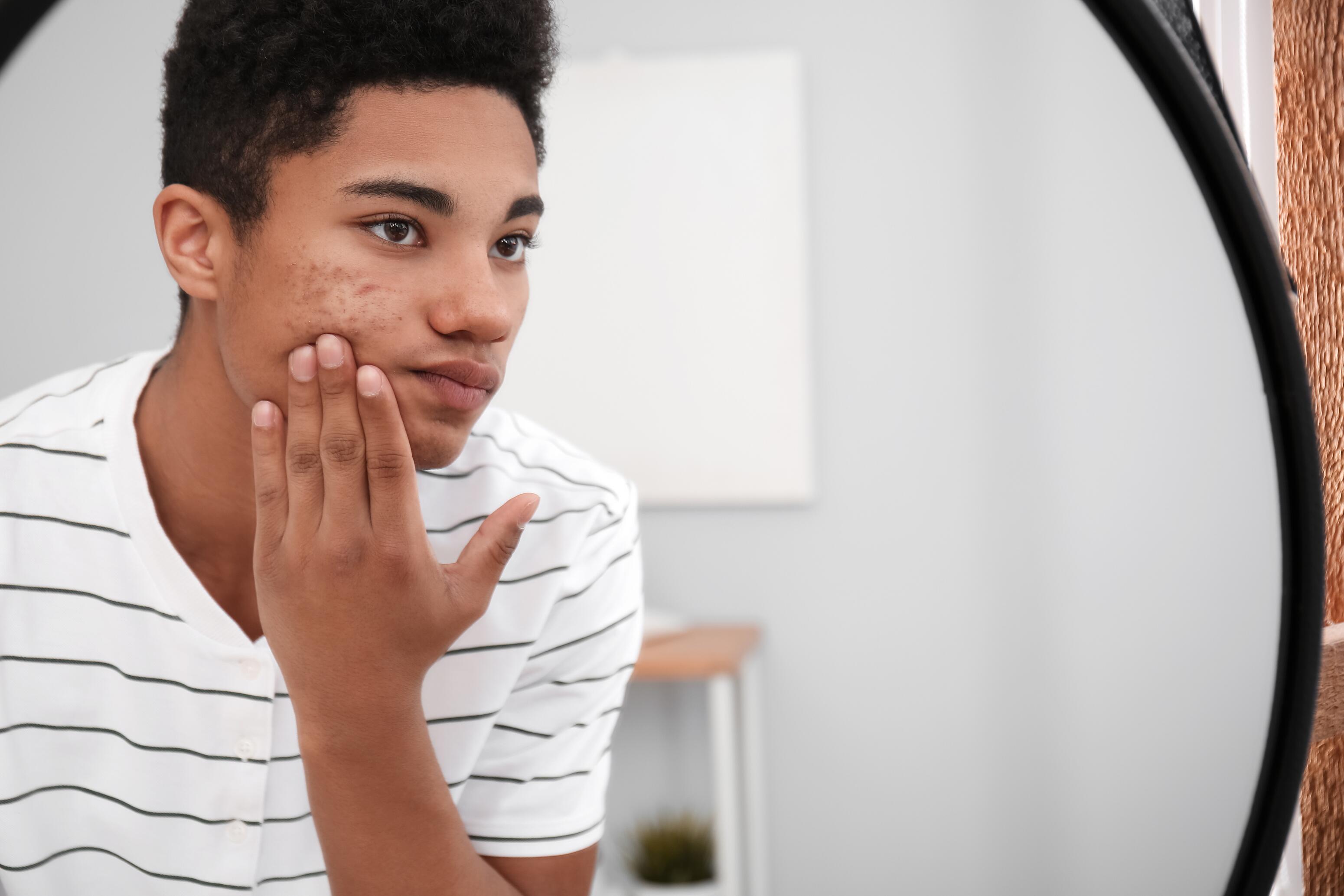Baby acne: causes, symptoms and solutions
?t=crop&width=1.000&height=1.000)
Summary
Understanding infantile acne¹ ²
Infant acne is a rare, generally benign skin condition that typically appears between 6 weeks and 12 months of age. Though often temporary and mild, it can cause concern for parents. It presents as comedones, papules, and pustules that appear on the face, neck, and sometimes the chest or back.
This type of acne is more common in boys and is thought to result from increased activity of the sebaceous glands, often stimulated by circulating androgens. While most cases resolve without treatment within a few months, more severe forms may lead to scarring or require medical management. It is essential to distinguish infant acne from other dermatological conditions and, in rare cases, to consider investigations to rule out an underlying disorder.
?t=crop&width=1.000&height=1.000)
Symptoms of acne in babies¹ ²
Infant acne usually presents with the typical lesions seen in acne: open comedones (blackheads), closed comedones (whiteheads), and sometimes inflammatory papules and pustules.
These lesions most commonly appear on the cheeks, but may also affect the forehead, chin, back, and chest.
In rare situations, additional signs such as hirsutism (excess hair growth) or elevated levels of androgens may be present, potentially pointing to an underlying endocrine disorder.
Causes of infantile acne¹
The precise causes of baby acne are not fully understood. Current theories point to a genetic predisposition and increased sebaceous gland activity in response to normal levels of circulating androgens. In girls, these androgens are produced by the adrenal glands, while in boys they originate from both the adrenals and the testes.
In rare instances, infant acne may be a sign of another condition, such as an adrenal cortical tumour or an infection caused by the fungus Malassezia.
Differential diagnosis of infant acne¹
Several skin conditions may resemble infant acne due to similar appearances:
- Perioral dermatitis: it presents as clusters of red papules around the mouth, usually sparing the border of the lips.
- Keratosis pilaris: rough, small bumps (often on the cheeks) caused by a buildup of keratin in hair follicles.
- Exogenous agents: topical products containing steroids, greasy ointments, or oils can provoke acne-like eruptions (steroid acne or chloracne).
- Skin infections: some infections, such as molluscum contagiosum, can mimic acne by producing pearly, umbilicated papules.
Accurate diagnosis requires a thorough dermatological examination to distinguish between these conditions and ensure appropriate management where necessary.
How to treat infantile acne effectively¹ ²
Mild cases of baby acne
In most instances, infant acne is mild and requires no medical treatment. Lesions usually disappear spontaneously within 6 to 12 months.
Here are a few simple hygiene tips for managing mild cases:
- Gentle cleansing: gently wash your baby’s skin with lukewarm water, avoiding soaps or harsh products.
- Avoid greasy products: do not apply creams or oils to the baby’s skin unless a healthcare professional advises you to do so.
- No over-the-counter treatments: products designed to treat adult acne should never be used on an infant’s skin without medical guidance.
Products designed to treat adult acne should never be used
When treatment is needed
Medical treatment may be necessary in moderate to severe cases, particularly when scars or significant inflammatory lesions are present.

Why a dermatology consultation is important¹ ²
If your baby’s acne lasts for more than 6 weeks or becomes severe, seeing a dermatologist is advisable to:
- Confirm the diagnosis: other skin conditions, such as eczema or infections, can mimic acne.
- Screen for underlying causes: persistent acne may point to a hormonal imbalance or another condition that needs further investigation.
- Prevent scarring: early, targeted treatment helps reduce the risk of permanent marks.
Ongoing care and precautions¹ ²
Proper follow-up and simple hygiene measures can help manage infant acne and prevent complications:
- Avoid touching or squeezing the spots to reduce the risk of infection or scarring.
- Dermatology follow-up: regular check-ups help adjust care and monitor for any side effects if treatment is prescribed.
- Do not use adult acne products: unless recommended by a healthcare provider, never apply acne cleansers or adult treatments to your baby’s skin.
Avoid touching
Dermatological follow-up
Products designed to treat adult acne should never be used
Sources
1. Poole CN, McNair V. Infantile Acne. Treasure Island (FL): StatPearls Publishing; 2024 Jan. [Internet]. https://www.ncbi.nlm.nih.gov/books/NBK541124/
2. AAD. Is that acne on my baby’s face? American academy of dermatology association. 2023 Dec. [Internet]. https://www.aad.org/public/diseases/acne/really-acne/baby-acne
- Discover Acne in adolescents: causes, treatments and dermatological advice
Acne in adolescents: causes, treatments and dermatological advice
- Discover Complete Guide to Treating Acne: Causes, Types and Solutions
Complete Guide to Treating Acne: Causes, Types and Solutions








